Island of Doomed Men

Brief Synopsis
Cast & Crew
Charles Barton
Peter Lorre
Rochelle Hudson
Robert Wilcox
Don Beddoe
George E. Stone
Film Details
Technical Specs

Synopsis
Mark Sheldon, a secret service operative, is assigned to investigate a modern slave racket that is hiring paroled convicts into hard labor on an obscure island in the Pacific. When Sheldon's partner is murdered just as he is about to reveal that Stephen Danel is the head of the racketeers, the agent goes undercover to solve the case himself. Suave and relentless, Danel works the men to death, constantly recruiting new workers at the prison gate. One of these new workers is Sheldon, who has framed himself for the murder of a fellow operative and is pretending to be an ex-con. On the island, Sheldon remains silent as he witnesses Danel's cruelty to his wife Lorraine and cook Siggy. Lorraine senses that her only hope lies in the defiant Sheldon, to whom she is attracted. Sheldon escapes his confinement long enough to instruct Lorraine to bring him Danel's keys, but soon after he is recaptured by Cort, the brutal guard captain. Playing on Cort's greed, Sheldon offers to split Danel's fortune with him, and Cort allows Sheldon to return and incite the prisoners to revolt. As Lorraine delivers the key to Sheldon, they are surprised by Danel and his guards. Sheldon's plans are further disrupted when the prisoners revolt and Cort seizes leadership from Sheldon and announces that he will take care of Lorraine. Sheldon runs to Danel's house to warn Lorraine, but soon finds himself facing Danel's gun. As Danel pauses during Sheldon's execution to taunt Lorriane, Siggy hurls a knife into his back. After Sheldon subdues the remaining guard and enslaved workers, his mission is accomplished and he and Lorraine fly home.

Director
Charles Barton
Cast

Peter Lorre

Rochelle Hudson
Robert Wilcox
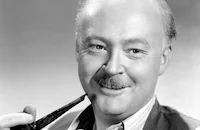
Don Beddoe
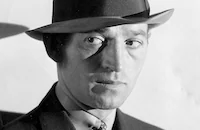
George E. Stone
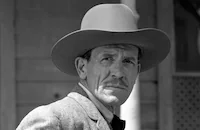
Kenneth Macdonald
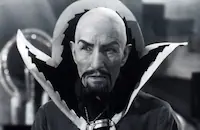
Charles Middleton
Stanley Brown
Earl Gunn
Sam Ash
Eddie Laughton
John Tyrrell
Richard Fiske
Al Hill
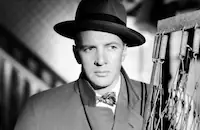
Bruce Bennett

Don Douglas
Trevor Bardette
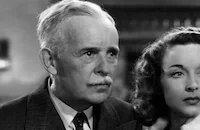
Howard Hickman

Addison Richards

Walter Miller
Ray Bailey
Lee Prather
Forbes Murray

George Mckay
Bernie Breakston
Harry Strang
Charles Hamilton
Crew
Robert D. Andrews
Robert D. Andrews
Lionel Banks
Irving Briskin
Lodge Cunningham
Thomas Flood
Kalloch
Benjamin Kline
Wallace Macdonald
M. W. Stoloff
James Sweeney

Film Details
Technical Specs

Articles
Island of Doomed Men
Though made well into the Hays Code era, Island of Doomed Men (1940) pushes the censorship restrictions of the era as far as possible thanks to its elements of sadism, bondage, spousal abuse, and one very startling moment of (simulated) animal cruelty. Virtually all of its impact can be credited to star Peter Lorre, clearly indulging himself with the opportunity to play a domineering yet vulnerable villain whose true, apparently complex feelings about his wife and his own nature remain ambiguous even at the climax. Lorre was no stranger to the complexities of evil having made an international splash with his iconic portrayal of a child murderer in Fritz Lang's 1931 classic, M. Like Lang, he made the jump to Hollywood from Germany with the rise of Adolph Hitler later in the 1930s (pausing in the process for major sinister roles in Alfred Hitchcock's The Man Who Knew Too Much [1934] and Secret Agent [1936]). The studios seemed a bit unsure of how to handle him, trying him out in roles ranging from the grotesque (Karl Freund's 1935 masterpiece Mad Love) to a string of eight Mr. Moto mysteries which completed in 1939. The following year which saw the release of Island of Doomed Men thus became something of a gearshift for Lorre's career as he rose to higher prominence as a character actor, most notably in the compelling and utterly bizarre Joan Crawford/Clark Gable vehicle Strange Cargo (1940) and what most film scholars pinpoint as the first genuine film noir title, Stranger on the Third Floor (1940). From this point on Lorre became an extremely hot property as he delivered an impressive string of classic performances both on film and radio, with such standouts as The Maltese Falcon (1941), Casablanca (1942), Arsenic and Old Lace (1944), and Black Angel (1946) cementing his status in the public consciousness.
Island of Doomed Men belongs to a long line of Hollywood films about corruption lurking within "civilized" prison systems, including 1929's Condemned, 1932's I Am a Fugitive from a Chain Gang, and 1939's Devil's Island. However, the approach here often feels more akin to a classic horror film, and not just thanks to Lorre's performance which was marketed on Columbia's posters in a fashion identical to his more traditionally ghoulish roles ("Women shuddering at his cruel caress! Men dying under his torturing lash!"). The fast, often nightmarish narrative crams an almost paranoid amount of incident into barely over an hour, with most of the action taking place at night and the isolated island setting often evoking Island of Lost Souls (1932) or especially 1928's West of Zanzibar and its more perverse 1932 remake, Kongo.
Lorre's inclination to go over the top with his full bag of thespian tricks was welcomed here by director Charles Barton, a onetime A.D. on 1927's Wings who was still only a few years into his career (which would subsequently take him to a string of Abbott and Costello films as well as copious television work). According to Stephen D. Youngkin's Lorre biography, The Lost One, Barton wanted to give Lorre latitude to embellish his own dialogue as he was "a very good screenwriter" with an ability to "take a line in the script or a whole scene and he'd work it out pretty well his way, not that he was domineering or anything, but he just thought it was for the best, and he did very well." However, if Lorre did push his performance too far over the line, Barton would say "'Cut-well, alright now, Peter, now we'll do it my way.' And he just looked at me and laughed like hell." The film proved satisfactory enough for Columbia to sign Lorre to an additional two films as part of a nonexclusive contract, though Lorre's request for story approval when also working for RKO did not sit as well, especially with his insistence on a comparable salary at both studios. The resulting film, Stranger on the Third Floor, capped off the year on a high note with another sterling turn in Lorre's cinematic rogue's gallery.
Though one could be forgiven for focusing only on Lorre in the film, the rest of the cast consists of several extremely accomplished veterans. Leading lady Rochelle Hudson started off as a child actress and also served as the voice of "Honey" in the popular Bosko cartoons before a very busy career as an adult actress, even appearing in no less than two other 1940 prison films, Convicted Woman and Men without Souls. Her career eventually slowed down in subsequent years, though she did appear as Natalie Wood's mother in 1955's Rebel without a Cause and, in a very different vein, was lured back in the '60s for two William Castle films, The Night Walker and Strait-Jacket (both 1964). Her co-star, handsome leading man Robert Wilcox, did not prove quite so fortunate in Tinseltown; though cultivated as a leading man in a string of B-level films, he left to serve in World War II and battled alcoholism throughout his marriage to hard-living actress Diana Barrymore before dying in 1955 at the age of 45. Finally, the secondary heavy role of Cort was portrayed by the very familiar face of versatile Charles Middleton, a prolific actor most famous as the screen's first Ming the Merciless in 1936's Flash Gordon. He mainly appeared in supporting roles for years afterwards, though he did manage a memorable lead as the unnerving Ferryman Douglas in the finest poverty row horror film of the '40s, Strangler of the Swamp (1946). Even if Lorre walks off with Island of Doomed Men in virtually every scene, film fans keeping an eye on everyone else around him will discover plenty of additional rewards.
Director: Charles Barton
Screenplay: Robert D. Andrews
Cinematography: Benjamin Kline
Art Direction: Lionel Banks
Music: Gerard Carbonara (uncredited)
Film Editing: James Sweeney
Cast: Peter Lorre (Stephen Danel), Rochelle Hudson (Lorraine Danel), Robert Wilcox (Mark Sheldon), Don Beddoe (Brand), George E. Stone (Siggy), Kenneth MacDonald (Dr. Rosener), Charles Middleton (Capt. Cort), Stanley Brown (Eddie), Earl Gunn (Mitchell).
BW-68m.
by Nathaniel Thompson

Island of Doomed Men
Quotes
Trivia
Notes
The working title for this film was Dead Man's Isle. According to material in the MPAA/PCA Collection at the AMPAS Library, Island of Doomed Men was rejected by censors in Australia. Many other censor boards passed the film only after eliminating or cutting short the whipping scene.














